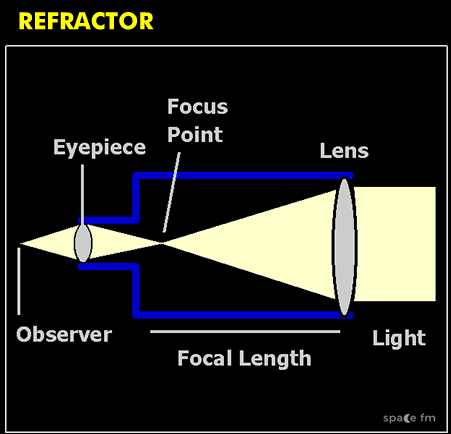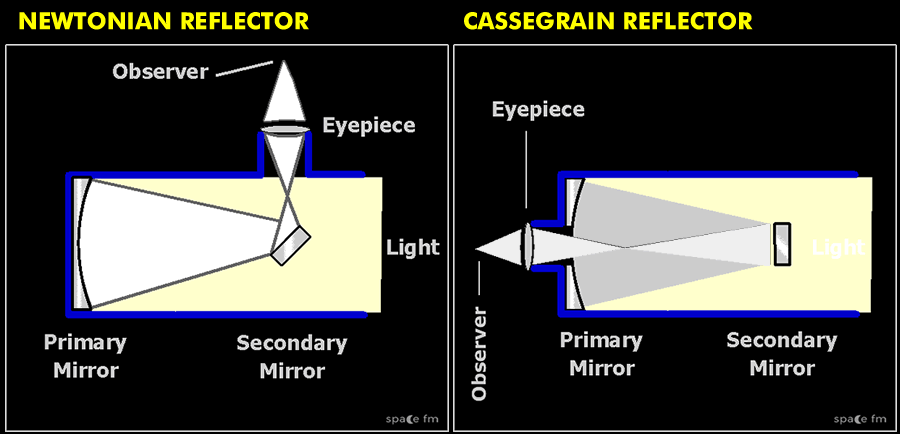Telescope Types
11.16 - Know that convex (converging) lenses and concave (converging) mirrors can be used to collect and focus light from astronomical objects11.18 - Understand the basic design of the following in terms of their key elements:
a) Galilean refracting telescope
b) Keplerian refracting telescope
c) Newtonian reflecting telescope
d) Cassegrain reflecting telescope
(detailed ray diagrams not required)
There are two types of telescope that we will study: refractor and reflector.
Refractor
A convex lens is used at the end of a tube to bring an image into focus at a point. Another lens called an eyepiece is used at the opposite end of the tube to magnify the image.
The lens is typically made of glass coated in a film to allow less light to be reflected and more to pass through the lens.
A Galilean refracting telescope uses a concave lens as the eyepiece and is typically fixed focus and has a limited field of view. A Keplerian refracting telescope uses a convex lens and is larger or heavier as they are focusable but images are inverted.
Reflector
A reflector collects light at one end of a tube and reflects it off a concave mirror. It is brought to a focus by a secondary mirror further up the tube at a 45 degree angle which is then magnified using an eyepiece.
This type of reflector is called a Newtonian reflector.
Another form of reflector is the Cassegrain reflector. This reflects light from its concave lens to a secondary mirror. This mirror is facing the primary mirror and reflects the light back down towards the primary but focuses through a small hole behind the primary.
A reflector's mirror is usually made of glass with an aluminium coating.
Inversion
Depending on the type of telescope you use, you will notice that images may be upside down or back to front.
Size
Although neither type of telescope is perfect there are several reasons why reflectors have gained in popularity over refractors:
- Higher resolution can be achieved with a smaller tube
- Refractors suffer from chromatic aberration. This means that colour can sometimes be warped
- Refractors suffer from lens sagging. The weight of the lens is supported by the edges and gravity distorts this. The maximum size refractor can be up to 1 metre wide.


 | © All Rights Reserved |
| © All Rights Reserved |